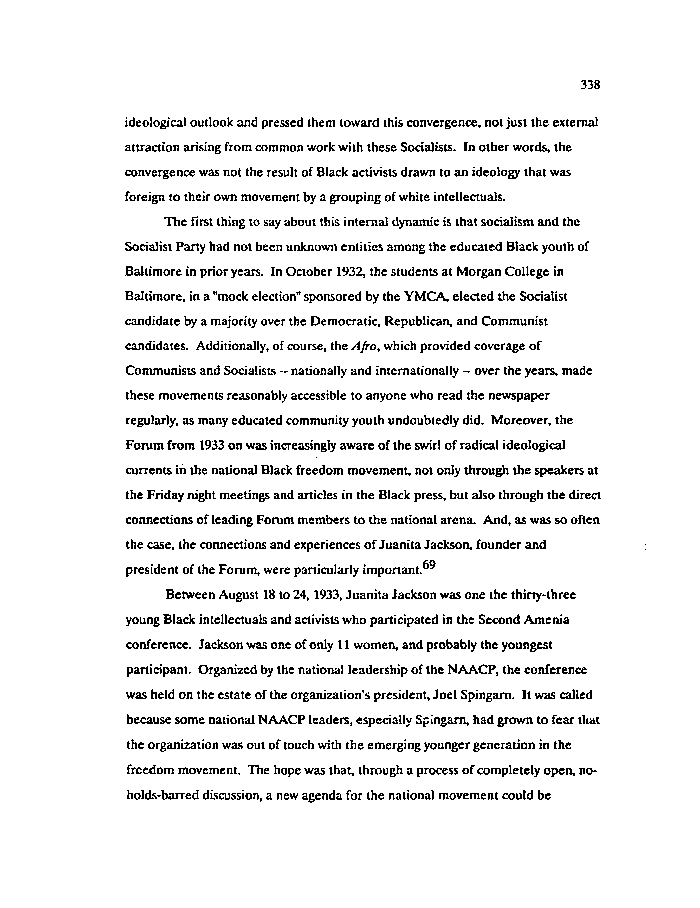|
338
ideological outlook and pressed them toward this convergence, not just the external
attraction arising from common work with these Socialists. In other words, the
convergence was not the result of Black activists drawn to an ideology that was
foreign to their own movement by a grouping of white intellectuals.
The first thing to say about this internal dynamic is that socialism and the
Socialist Party had not been unknown entities among the educated Black youth of
Baltimore in prior years. In October 1932, the students at Morgan College in
Baltimore, in a "mock election" sponsored by the YMCA, elected the Socialist
candidate by a majority over the Democratic, Republican, and Communist
candidates. Additionally, of course, the Afro, which provided coverage of
Communists and Socialists - nationally and internationally - over the years, made
these movements reasonably accessible to anyone who read the newspaper
regularly, as many educated community youth undoubtedly did. Moreover, the
Forum from 1933 on was increasingly aware of the swirl of radical ideological
currents in the national Black freedom movement, not only through the speakers at
the Friday night meetings and articles in the Black press, but also through the direct
connections of leading Forum members to the national arena. And, as was so often
the case, the connections and experiences of Juanita Jackson, founder and
president of the Forum, were particularly important. ^
Between August 18 to 24,1933, Juanita Jackson was one the thirty-three
young Black intellectuals and activists who participated in the Second AmenJa
conference. Jackson was one of only 11 women, and probably the youngest
participant. Organized by the national leadership of the NAACP, the conference
was held on the estate of the organization's president, Joel Spingarn. It was called
because some national NAACP leaders, especially Spingarn, had grown to fear that
the organization was out of touch with the emerging younger generation in the
freedom movement. The hope was that, through a process of completely open, no-
holds-barred discussion, a new agenda for the national movement could be
|

